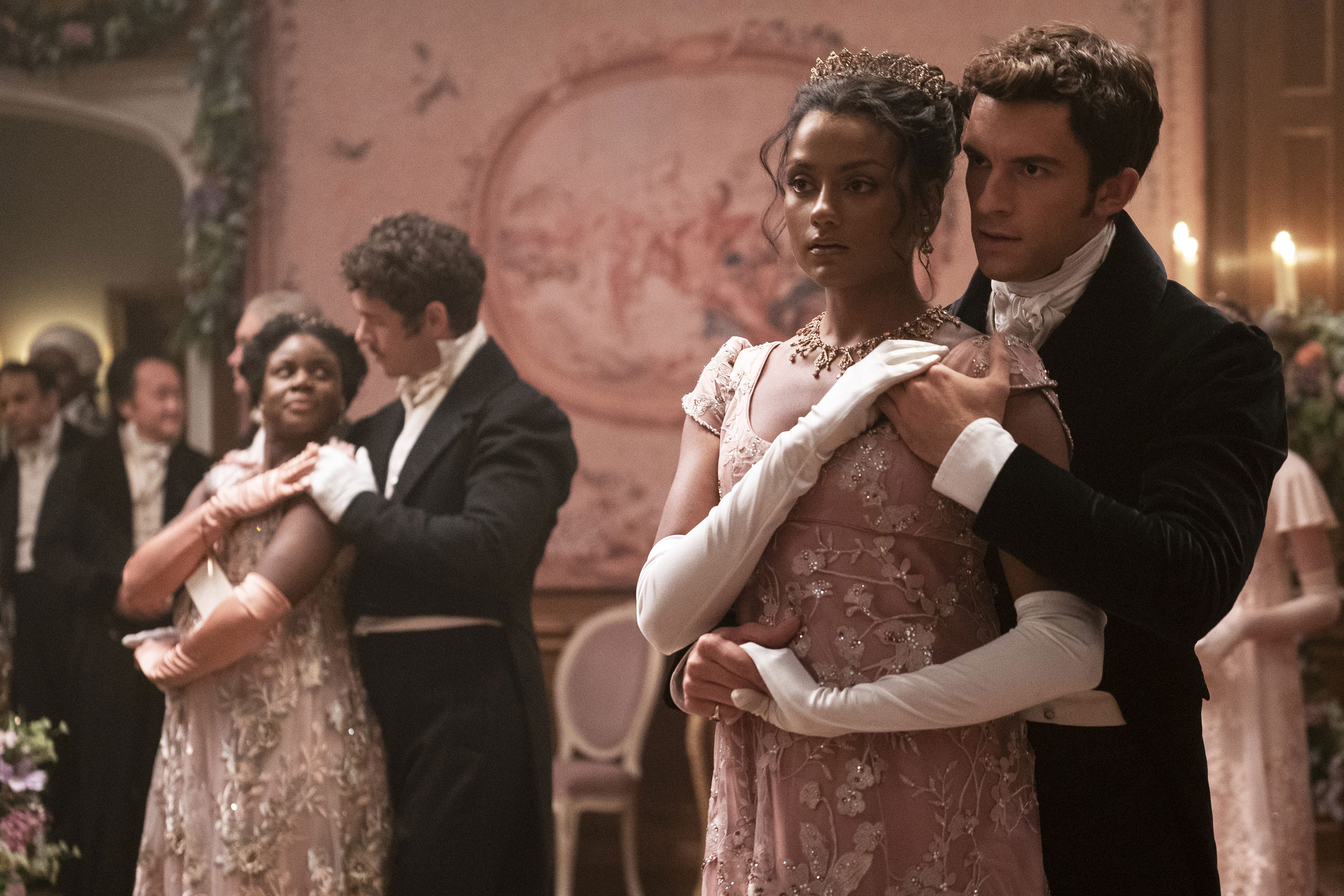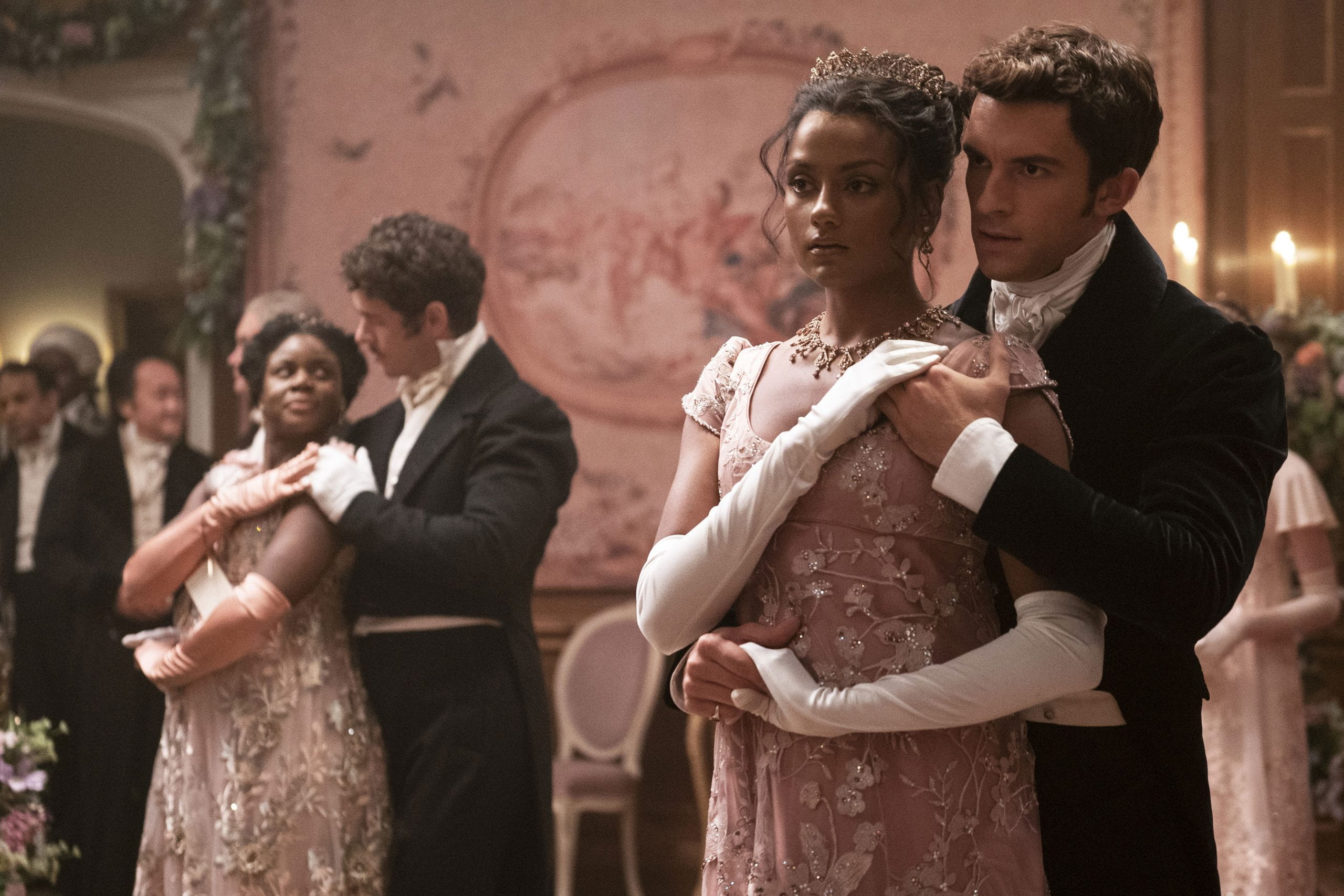Christy Joshy – Social Media Editor
It’s 2022, yet people still can’t get over the nostalgia and whimsy of the 18th century. And Netflix, with its Emmy-nominated period drama, Bridgerton, has satisfied that longing. With its season two release, Bridgerton fantastically recaptures the essence of regency-era London. Based on Julia Quinn’s bestselling series, the show centralizes on each of the eight Bridgerton siblings and their encounters with love.
Season 2, in particular, focuses on Anthony, the oldest of the Bridgerton clan, who holds the title of Viscount. Headstrong and adamant about finding the perfect wife, Anthony embarks on his journey to find a woman who checks all the boxes: intelligent, capable of taking care of children, easy on the eyes, and multilingual. Nonetheless, his extensive list does not include love, and thus, his dilemma begins.
The Sharma family, half-sisters Kate and Edwina and their mother Mary, have arrived from India to find a husband for Edwina during London’s mating season. When Edwina is named the “diamond of the season,” Anthony must have her, not because of his love for her, but because she fits his demands. When the two become acquainted, he instead finds himself falling in love with Kate, who, like him, is stubborn and strong-willed. The season takes viewers through their romance and struggles to suppress their growing feelings for the sake of Edwina.
However, one key difference in Bridgerton that sets it apart from other period dramas is its color blindness. Race has barely any significance in the show. Once a genre for strictly white actors, Bridgerton has paved the way to include people of color, not just as subjects and side characters, but as the leads.
Kate and Edwina, played by Simone Ashley Pillai and Charithra Chandran, are of South Indian descent. Their casting has taken the South Asian community by storm because it marks one of the first times dark-skinned South Indians have been offered such a coveted role in Western media.
This feat is even more groundbreaking because Bollywood, India’s film industry, has been notoriously known to strictly cast lighter-skinned Indians who fit the Eurocentric standard of beauty. Now that Western society has embraced South Asian beauty, it demonstrates a looming need for Bollywood to step up in its inclusivity of the whole country.
However, there were some elements in Bridgerton’s season 2 that were confusing to South Asian viewers because of their inconsistency. For instance, though the actors who played Kate and Edwina are of South Indian descent, the show cast them as North Indians. This would have been an opportunity for the show to display South Indian culture since Western media rarely portrays it.
Also, Edwina refers to Kate as “didi,” a Hindi term used to address an older sister. However, Edwina and Kate mention their father as “appa,” a word used in South Indian languages that means father. Despite some errors and irregularities, the season has been widely revered for including faces in media that haven’t been seen before in this setting.
For South Asian audiences everywhere, Kate and Edwina are more than actresses on the screen. They represent the greater diversity of India, not just through skin color but the fact that not every Indian is just a nerdy caricature who stays on the side as comedic relief. Bridgerton has paved the way for Hollywood and Bollywood to take a more significant look at the importance of inclusivity.

joshc2@mail.broward.edu
